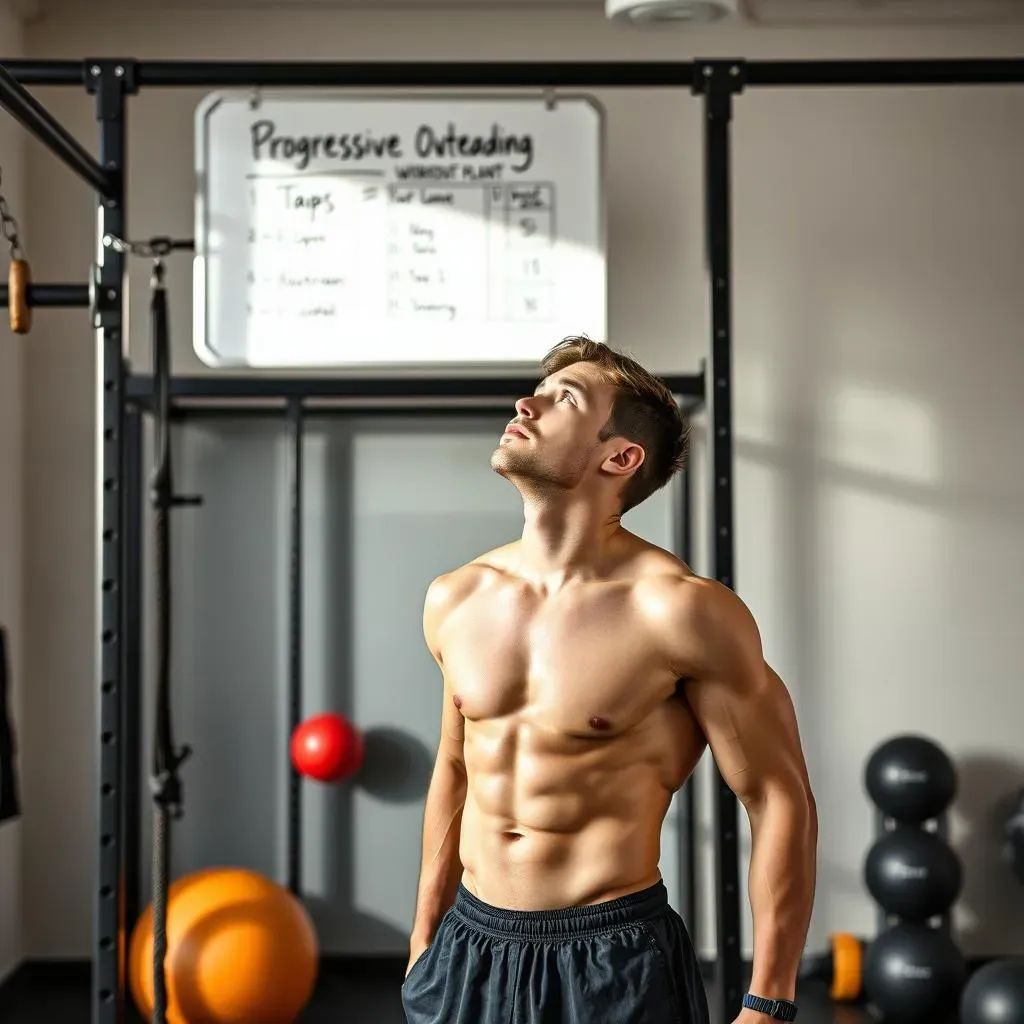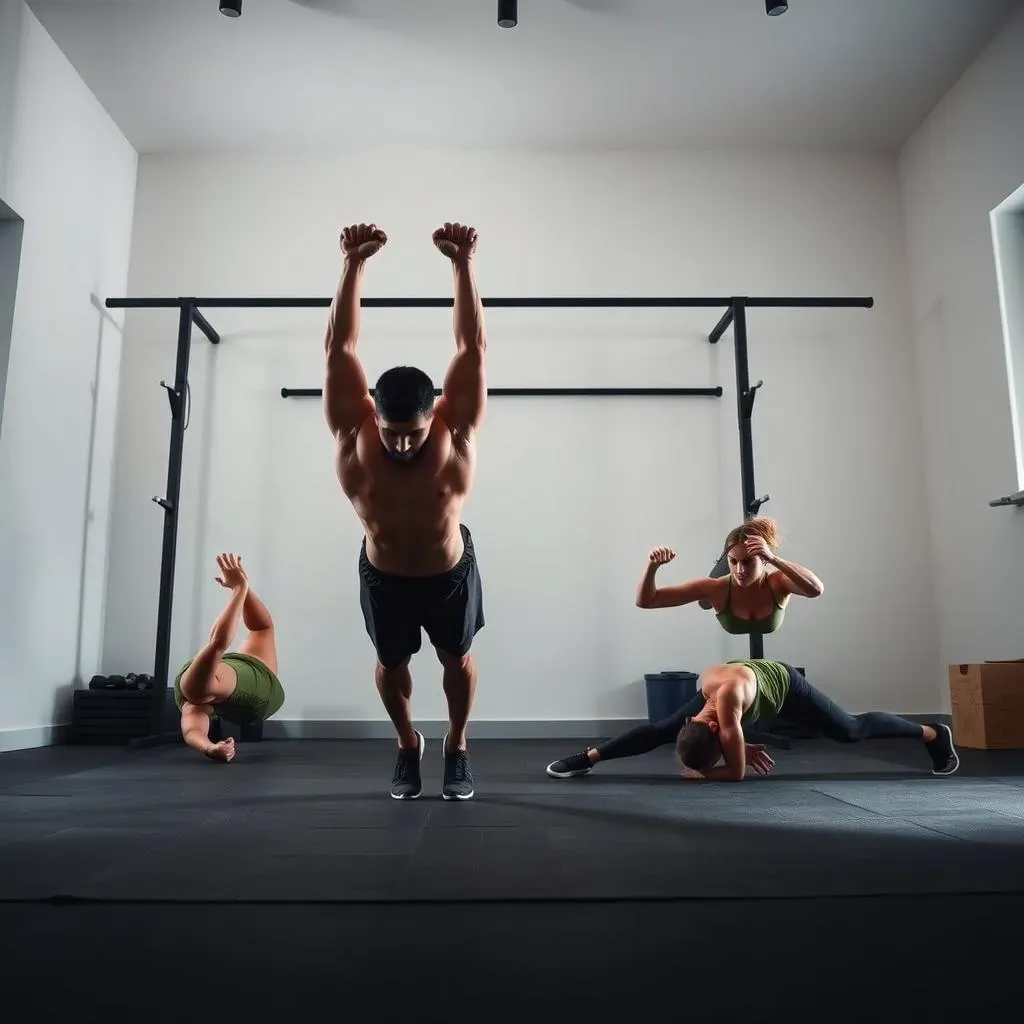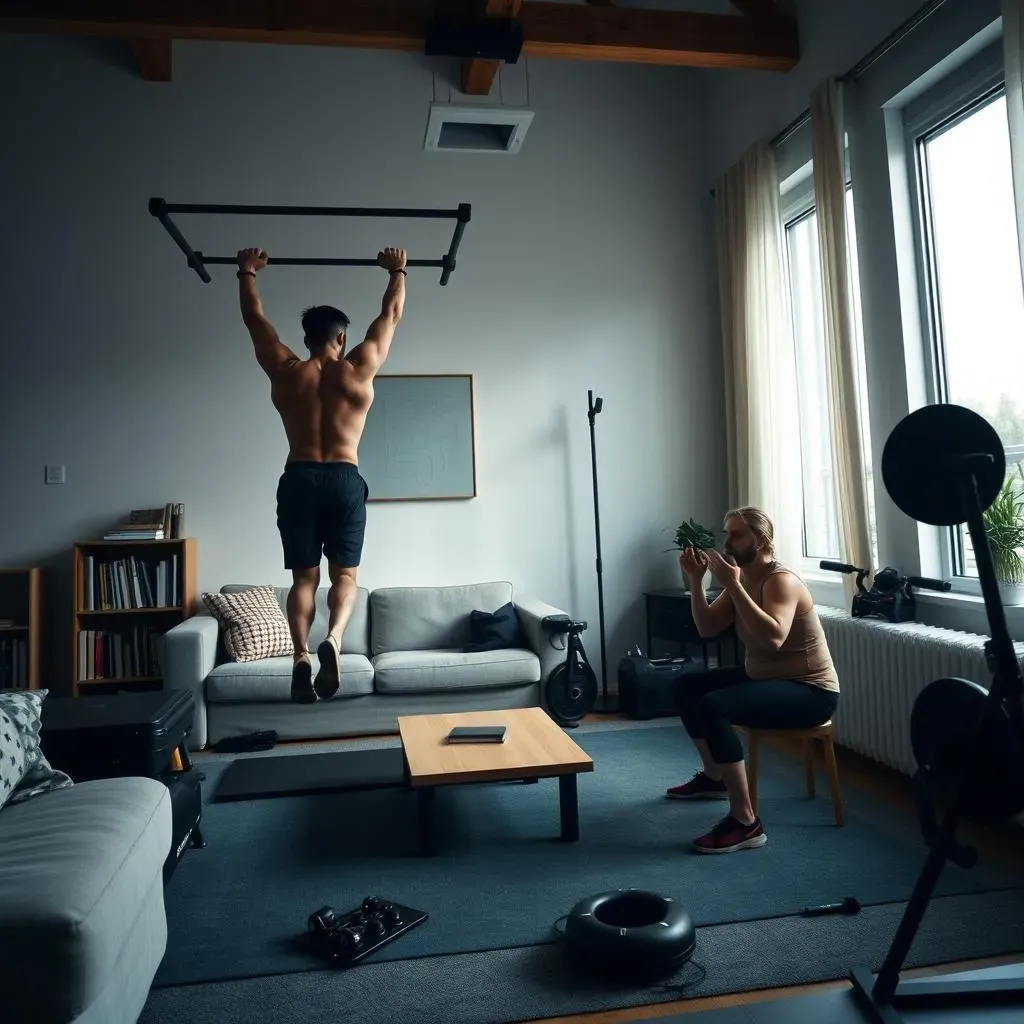Table of Contents
Are you looking for a convenient and effective way to build strength and muscle without the need for expensive gym equipment? Look no further than a home calisthenics workout. Calisthenics, which utilizes body weight as resistance, has become increasingly popular due to its accessibility and efficiency. A well-structured home calisthenics workout can help you achieve your fitness goals from the comfort of your own home. In this article, we will delve into the world of home calisthenics workouts, exploring the importance of progressive overloading, essential movement patterns, and exercises to help you get started. Whether you're a beginner or an advanced lifter, this comprehensive guide will provide you with the knowledge and tools necessary to create a personalized home calisthenics workout routine that yields optimal results. So, let's dive into the basics of home calisthenics workout and discover how you can transform your body without ever stepping foot in a gym.
Introduction to Home Calisthenics Workout

Introduction to Home Calisthenics Workout
What is Calisthenics and How Does it Work?
Calisthenics is a form of exercise that uses body weight as resistance to build strength and muscle. It's a highly effective way to improve overall fitness, requiring minimal equipment and space. Home calisthenics workouts are perfect for those who prefer to exercise in the comfort of their own homes, or for those who have busy schedules and can't make it to the gym. By utilizing your own body weight, you can engage in a variety of exercises that target different muscle groups, from push-ups and squats to lunges and planks.
The beauty of calisthenics lies in its simplicity and versatility. You don't need any specialized equipment, just a willingness to challenge yourself and push your limits. Whether you're a beginner or an experienced athlete, calisthenics can be adapted to suit your fitness level. For beginners, there are modified versions of exercises that are easier to perform, while advanced individuals can progress to more challenging movements, such as single-arm push-ups or single-leg squats.
Exercise | Beginner Variation | Advanced Variation |
|---|---|---|
Push-ups | Knee Push-ups | Single-arm Push-ups |
Squats | Bodyweight Squats | Pistol Squats |
Lunges | Static Lunges | Walking Lunges |
- Improved strength and muscle tone
- Increased flexibility and mobility
- Enhanced cardiovascular health
- Better balance and coordination
- Weight loss and management
Getting Started with Home Calisthenics Workout
Starting a home calisthenics workout is easier than you think. Begin by setting aside a dedicated space in your home where you can exercise without distractions. Invest in a good quality yoga mat for comfort and grip. It's also essential to wear comfortable clothing and have a water bottle nearby to stay hydrated throughout your workout.
A typical calisthenics workout consists of a series of exercises that target different muscle groups. For example, you might start with upper body exercises like push-ups, dips, and pull-ups, followed by lower body exercises such as squats, lunges, and calf raises. Core exercises like planks and Russian twists can help improve your posture and balance.
- Start with 2-3 sets of 8-12 repetitions for each exercise
- Gradually increase the number of sets and repetitions as you build strength and endurance
- Listen to your body and rest when needed
- Stay consistent and make calisthenics a part of your regular routine
Benefits of Progressive Overloading in Home Calisthenics Workout

Benefits of Progressive Overloading in Home Calisthenics Workout
Progressive overloading is a crucial aspect of any workout routine, and home calisthenics is no exception. Progressive overloading refers to the gradual increase of weight, resistance, or intensity in your workouts to challenge your muscles and promote growth. In the context of home calisthenics, progressive overloading can be achieved through various methods, ensuring that your workouts remain engaging and effective.
Methods of Progressive Overloading
There are several ways to incorporate progressive overloading into your home calisthenics workout. One of the most common methods is to increase the number of repetitions or sets of an exercise. For example, if you're doing push-ups, you can start with 3 sets of 8-12 reps and gradually increase the number of reps as you build strength. Another method is to decrease rest time between sets, which increases the overall intensity of your workout.
Method | Description | Example |
|---|---|---|
Increase Repetitions | Gradually increase the number of reps as you build strength | Start with 3 sets of 8-12 reps, increase to 3 sets of 15-20 reps |
Decrease Rest Time | Reduce rest time between sets to increase intensity | Rest for 60-90 seconds between sets, decrease to 30-60 seconds |
Modify Exercises | Progress to more challenging variations of exercises | Progress from knee push-ups to standard push-ups, then to diamond push-ups |
Progressive overloading is essential for continuous muscle growth and strength gains. Without it, your muscles will adapt to the same routine, and progress will stagnate. By incorporating these methods into your home calisthenics workout, you'll be able to challenge yourself continuously and achieve your fitness goals.
- Increase muscle strength and endurance
- Improve overall physique and body composition
- Enhance mental toughness and discipline
- Support weight loss and management
Remember, progressive overloading should be done gradually and safely. Listen to your body and only increase the intensity when you're ready. With consistent effort and dedication, you'll be able to unlock your full potential and achieve the strength and physique you've always wanted.
Mastering Movement Patterns and Essential Exercises for Home Calisthenics Workout

Mastering Movement Patterns and Essential Exercises for Home Calisthenics Workout
Understanding Movement Patterns
Mastering movement patterns is crucial for a successful home calisthenics workout. Movement patterns refer to the way your body moves during exercises, including the range of motion, muscle engagement, and overall technique. By understanding these patterns, you can optimize your workouts, prevent injuries, and achieve better results.
There are several key movement patterns to focus on in calisthenics: pushing, pulling, squatting, hinging, and bracing. Each of these patterns targets specific muscle groups and requires proper form to execute effectively. For example, the pushing pattern includes exercises like push-ups and dips, which work the chest, shoulders, and triceps. The pulling pattern includes exercises like pull-ups and rows, which target the back and biceps.
Movement Pattern | Exercises | Muscle Groups |
|---|---|---|
Pushing | Push-ups, Dips | Chest, Shoulders, Triceps |
Pulling | Pull-ups, Rows | Back, Biceps |
Squatting | Squats, Lunges | Legs, Glutes |
Hinging | Deadlifts, Hip Thrusts | Hamstrings, Glutes |
Bracing | Planks, Side Planks | Core, Obliques |
- Improved overall strength and muscle balance
- Enhanced athletic performance and coordination
- Reduced risk of injury through proper technique
- Increased mindfulness and body awareness
Essential Exercises for Home Calisthenics Workout
While there are countless calisthenics exercises to choose from, some are more essential than others. These exercises form the foundation of a well-rounded workout routine and should be included in your training. Let's take a look at some of the most effective exercises for each movement pattern.
For the pushing pattern, push-ups and dips are staples. For pulling, pull-ups and inverted rows are excellent choices. Squats and lunges dominate the squatting pattern, while deadlifts and hip thrusts are king for hinging. Finally, planks and side planks will help you build a strong core through bracing.
Exercise | Description | Muscle Groups |
|---|---|---|
Push-ups | Basic upper body exercise | Chest, Shoulders, Triceps |
Pull-ups | Advanced upper body exercise | Back, Biceps |
Squats | Compound lower body exercise | Legs, Glutes |
Deadlifts | Compound exercise for hinging | Hamstrings, Glutes, Back |
Planks | Core exercise for bracing | Core, Obliques |
- Start with 3 sets of 8-12 reps for each exercise
- Gradually increase reps and sets as you build strength
- Focus on proper form and technique
- Listen to your body and rest when needed
Customizing Your Home Calisthenics Workout Routine for Optimal Results

Customizing Your Home Calisthenics Workout Routine for Optimal Results
Understanding Your Fitness Goals and Needs
Customizing your home calisthenics workout routine is crucial for achieving optimal results. To create a personalized routine, you need to understand your fitness goals and needs. Are you looking to build muscle, increase endurance, or lose weight? Perhaps you're recovering from an injury and need exercises that modify impact. Whatever your goals, it's essential to tailor your workout to address specific areas of improvement.
Start by assessing your current fitness level. Consider your strength, flexibility, and endurance. Identify your strengths and weaknesses to determine which exercises to focus on. For example, if you're struggle with push-ups, you may want to include more exercises that target your chest, shoulders, and triceps. On the other hand, if you're finding squats easy, you can progress to more challenging variations like pistol squats or single-leg deadlifts.
Fitness Goal | Recommended Exercises | Frequency and Intensity |
|---|---|---|
Muscle Building | Push-ups, Pull-ups, Squats, Lunges | 3-4 sets of 8-12 reps, 3-4 times a week |
Endurance | Jumping Jacks, Burpees, Mountain Climbers | 3-4 sets of 12-15 reps, 4-5 times a week |
Weight Loss | Planks, Russian twists, Leg raises | 3-4 sets of 12-15 reps, 4-5 times a week |
- Set specific, measurable, achievable, relevant, and time-bound (SMART) goals
- Create a workout schedule and stick to it
- Listen to your body and rest when needed
- Stay hydrated and fuel your body with a balanced diet
Creating a Balanced and Periodized Workout Routine
A well-structured workout routine is essential for making consistent progress. Periodization involves dividing your workout routine into specific phases, each with a focus on different aspects of fitness. For example, you might start with a hypertrophy phase, focusing on higher reps and sets to build muscle. Then, move to a strength phase, lifting heavier and focusing on lower reps. Finally, you could have an endurance phase, increasing the intensity and duration of your workouts.
A balanced routine should include a mix of pushing, pulling, squatting, hinging, and bracing exercises. Aim to work out 3-4 times per week, allowing for at least one day of rest in between. Warm up before each workout with 5-10 minutes of light cardio and stretching. Cool down afterwards with static stretches to aid in recovery.
Phase | Focus | Exercises | Frequency and Intensity |
|---|---|---|---|
Hypertrophy | Muscle Building | Push-ups, Pull-ups, Squats, Lunges | 3-4 sets of 8-12 reps, 3-4 times a week |
Strength | Muscle Strength | Diamond Push-ups, Single-arm Pull-ups, Pistol Squats, Single-leg Deadlifts | 3-4 sets of 3-6 reps, 3-4 times a week |
Endurance | Cardiovascular Endurance | Jumping Jacks, Burpees, Mountain Climbers | 3-4 sets of 12-15 reps, 4-5 times a week |
- Start with compound exercises and progress to isolation exercises
- Incorporate variety in your routine to avoid plateaus
- Make adjustments based on your progress and how your body feels
- Stay consistent and patient, as results take time
Maximizing Gains with Home Calisthenics Workout and Nutrition

Maximizing Gains with Home Calisthenics Workout and Nutrition
Nutrition Fundamentals for Supporting Calisthenics
A well-structured calisthenics workout routine is only half the battle when it comes to achieving your fitness goals. Nutrition plays a critical role in supporting your workouts, aiding in recovery, and promoting muscle growth. To maximize your gains, it's essential to fuel your body with the right foods at the right times.
A balanced diet should include a mix of protein, carbohydrates, and healthy fats. Protein is vital for muscle repair and growth, so aim to consume 1.2-1.6 grams of protein per kilogram of body weight daily. Carbohydrates provide energy for your workouts, while healthy fats support hormone production and overall health. Hydration is also crucial, so drink plenty of water throughout the day.
Nutrient | Recommended Daily Intake | Food Sources |
|---|---|---|
Protein | 1.2-1.6 grams/kg body weight | Chicken, Fish, Eggs, Legumes |
Carbohydrates | 2-3 grams/kg body weight | Brown Rice, Quinoa, Whole Wheat Bread, Fruits |
Healthy Fats | 0.5-1 gram/kg body weight | Nuts, Seeds, Avocados, Olive Oil |
- Eat 5-6 meals per day, spaced out every 2-3 hours
- Include a source of protein with every meal
- Choose complex carbohydrates for sustained energy
- Healthy fats support hormone production and satiety
Supplementation and Recovery Strategies
While a balanced diet provides the foundation for muscle growth and recovery, supplementation can help fill any nutritional gaps and support your workout routine. Protein powder, creatine, and branched-chain amino acids (BCAAs) are popular supplements among calisthenics enthusiasts.
Recovery is just as important as the workout itself. After each session, take time to stretch and foam roll your muscles to aid in recovery. A 7-9 hours of sleep each night is also essential for muscle repair and growth. Additionally, consider incorporating active recovery techniques like light cardio or yoga to promote blood flow and flexibility.
Supplement | Benefits | Recommended Dosage |
|---|---|---|
Protein Powder | Convenient way to increase protein intake | 1-2 scoops per day |
Creatine | Increases strength and endurance | 3-5 grams per day |
BCAAs | Reduces muscle soreness and fatigue | 5-10 grams per day |
- Consult with a healthcare professional before adding supplements
- Stay hydrated by drinking plenty of water
- Listen to your body and rest when needed
- Prioritize sleep for optimal recovery
Tracking Progress and Staying Motivated
Tracking your progress is essential for staying motivated and making adjustments to your workout and nutrition plan. Take progress photos, measurements, and track your weight. Monitor your workout performance, noting increases in strength and endurance.
Set specific, measurable, achievable, relevant, and time-bound (SMART) goals. Celebrate your successes, no matter how small, and don't be too hard on yourself when you encounter setbacks. Surround yourself with like-minded individuals who share your passion for calisthenics and nutrition.
Goal | Target | Deadline |
|---|---|---|
Increase Squat | 10kg in 3 months | 90 days |
Increase Push-ups | 20 reps in 2 months | 60 days |
Reduce Body Fat | 5% in 6 months | 180 days |
- Set both short-term and long-term goals
- Find a workout buddy or join a fitness community
- Reward yourself for reaching milestones
- Stay positive and focus on progress, not perfection
Conclusion: Achieving Fitness Success with Home Calisthenics Workout
In conclusion, a home calisthenics workout is a powerful tool for building strength, increasing flexibility, and boosting overall fitness. By incorporating progressive overloading, mastering essential movement patterns, and customizing your workout routine, you can achieve significant gains without the need for specialized equipment. Remember, consistency and patience are key. Combine your home calisthenics workout with proper nutrition and listen to your body to avoid injury or burnout. With dedication and the right approach, you can unlock the full potential of calisthenics and enjoy a stronger, healthier you. Visit calisthenicsfrance.com for more fitness tips and guidance on your journey to a fitter, stronger self through home calisthenics workout.
